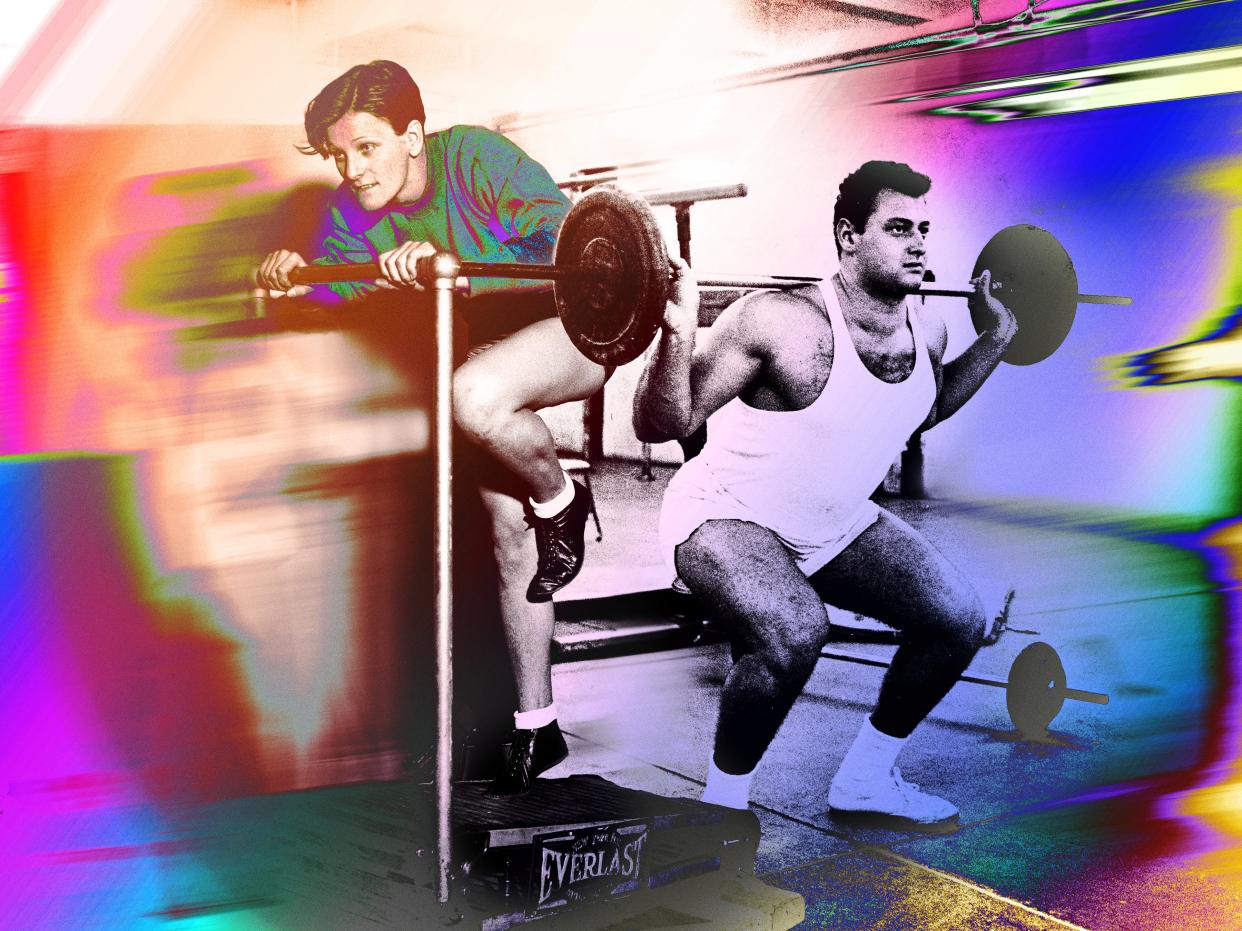Is ‘Run Fast, Squat Heavy’ the Ultimate Compromise Between Cardio and Strength Training?

Photographs: Getty Images; Collage: Armando Zaragoza
This story is from Manual, GQ’s flagship newsletter offering useful advice on style, health, and more, four days a week. Sign up here to get it in your inbox.
A few years ago, longtime CrossFit athlete Adam Klink set a certain corner of the internet ablaze when he ran a sub-five-minute mile and hit a 500-pound back squat in the same day. Either of those numbers could be a personal record of a very fit person, but to Klink, it was the combination that exemplified the CrossFit philosophy. “It’s that mindset of not being amazing at one thing but good at everything,” he tells GQ.
What began as a personal quest caught on, and Klink published his training plan to create the 10-week Run Fast, Squat Heavy program, which has since captured the attention of runners, lifters, and the “hybrid” athletes who do both.
Perhaps the reason Klink’s accomplishment so captivated the fitness world was because running fast and squatting heavy are largely seen as incompatible. And in some ways, they are. Lifting heavy weights builds fast-twitch muscle fibers, which power short bursts of energy and fatigue quickly, says N’namdi Nelson, an exercise physiologist at NYU Langone’s Sports Performance Center. If you focus on building that capacity, you run the risk of ignoring the slow-twitch muscles that power endurance efforts. “It’s like a seesaw,” Nelson says. “As you get stronger, it’s going to be difficult to also keep the endurance up.”
Difficult, but as Klink proved, not impossible. Want to try running fast and squatting heavy? Here’s what experts say about who the program is right for, and what you should know before you start.
It’s not for beginners.
Before you try to run fast and squat heavy together, you should ideally be able to run relatively fast and squat relatively heavy separately. Casey Johnston, who writes the She’s a Beast newsletter, and who tried Run Fast, Squat Heavy last year, suggests that if you’re new to either running or lifting (or both), you take time to build proficiency and conditioning before attempting a program like this.
Set your goal wisely.
There’s a beautiful symmetry to Klink’s goal of a sub-five-minute mile and a 500-pound squat. But those numbers will be out of reach for most, and Klink says that his program is intended for athletes to set their own goal based on a one-mile time trial and a current one-rep max.
Figuring out just how much those numbers will progress in 10 weeks isn’t always straightforward, so Nelson recommends recruiting a coach to help. And when in doubt, aim conservative.
Prioritize recovery.
Klink says the biggest challenge of the training plan was avoiding injury. He credits his success to recovering well during training: He stretched daily, used recovery boots, tooks cold baths, and soaked in Epsom salts. Following the warm-ups and cool-downs prescribed in the program is also key, he says, as is prioritizing sleep and nutrition.
Exercise physiologist and trainer Tom Holland suggests keeping an eye out for symptoms of overtraining, such as inability to sleep, irritability, an elevated resting heart rate, and being overly sore.
You won’t reach your full potential in either.
Yes, it’s possible to run fast and squat heavy on the same day. But will it be the fastest mile, or the heaviest squat you’re capable of? Probably not. “If I were solely focused on squatting, I would have been able to jump my back squat numbers even more,” says Klink. “If I focused on running and not back squatting, could I have run faster? Absolutely. But you can slowly raise the level of both at the same time if you train them properly.”
There are other ways to train endurance and strength at the same time.
“There’s lots of stuff on social media that says lifting weights is going to make you bulky and muscle-bound and slow,” says Alan Thrall, strength training coach and founder of Untamed Strength, who tried the challenge with deadlifts rather than squats. “And the other camp says strength is most important, and you don’t need cardio because it will kill your gains. Now people are coming around to the idea that you can—and probably should—do both.”
But you don’t need to be sprinting around the track or doing one rep max attempts to reap the benefits of having a balance of cardio and strength training in your routine. In fact, for running coach Eric Orton, the risks of lifting as heavy as you can override the benefits when it comes to overall well-being. “You have to see [Run Fast, Squat Heavy] as a sport,” he says. “Not something that’s good for you.”
So Run Fast, Squat Heavy is intense. It isn’t for everyone. But it might be fun. And if it doesn’t sound fun? “You can be a very well-rounded athlete without trying to set PRs in either of these things,” says Johnston.
Originally Appeared on GQ
More Great Wellness Stories From GQ
Why a VO2 Max Test Reveals So Much About Overall Health and Longevity
The Best High-Protein Snacks for Hitting Your Macros on the Go
How Zac Efron Bulked Up for His Wrestling Debut in The Iron Claw
The Real-Life Diet of Death Cab for Cutie’s Ben Gibbard, Who Runs 100-Mile Races When He’s Not on Tour
Not a subscriber? Join GQ to receive full access to GQ.com.

